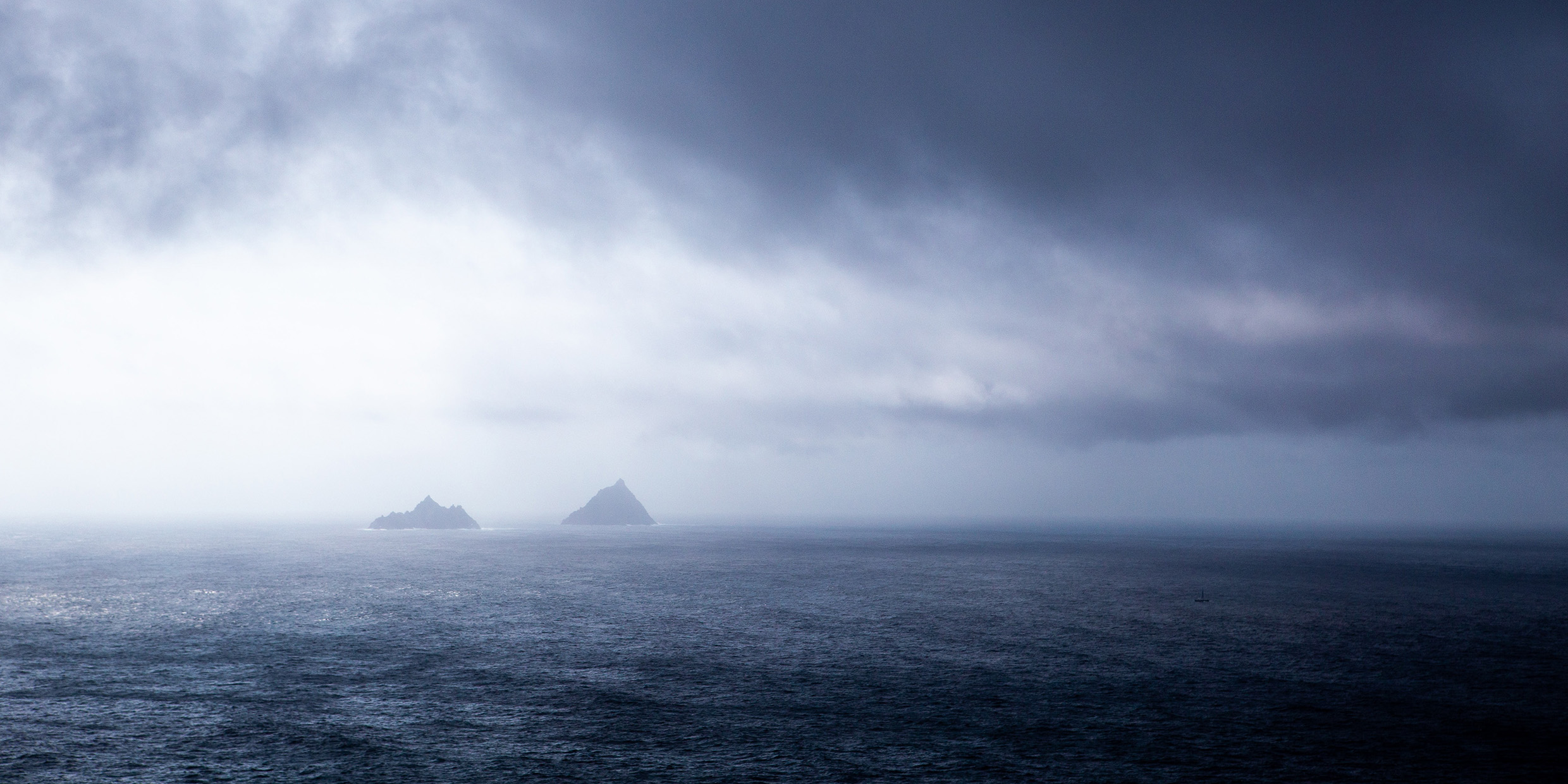Originally published 6 February 2005
When two pagan Irish princesses, daughters of King Lóegaire, asked Patrick about his God, he is said to have answered: “Our God is the God of all things, the God of the sky and earth, the God of sea and stream, the God of sun and moon, the God of the great high mountains and the deep glens, the God of heaven, in heaven and under heaven. And he has a household — heaven and earth and the sea and all they contain.”
From what we know of the druidic faith of the Celts, none of this would have sounded particularly foreign to the pagan princesses. Patrick’s words evoke nothing so much as the poem of Amergin, a primary document of pre-Christian Irish literature passed down for centuries through the oral tradition.
I am the wind on the sea. I am the ocean wave. I am the sound of the billows. I am the seven-horned stag. I am the hawk on the cliff. I am the dewdrop in sunlight. I am the fairest of flowers. I am the raging boar. I am the salmon in the deep pool. I am the lake on the plain. I am the meaning of the poem. I am the point of the spear. I am the god that makes fire in the head. Who levels the mountain? Who speaks the age of the moon? Who has been where the sun sleeps? Who, if not I?
Writing about Celtic spirituality, Noel Dermot O’Donoghue speaks of the Irish perception of a Presence in the world, existing somewhere between light and darkness, clarity and mystery, matter and spirit. The God of the earliest Irish Christians was the King of the Elements, Rìgh na nDúl, he says, and adds: “Just as Christianity became wedded to logos in Hellenism, and to authority in Romanism, it became wedded to nature and the natural world, in all its various levels and regions, in the Celtic world.”
What does it mean to honor a God whose immanence takes precedence over his transcendence? How do we worship a God who animates all things but reveals nothing directly of himself? And, most importantly from a modern skeptic’s point of view, how do we pray to a deity who eludes even the person pronouns “he,” “himself,” and “who,” who absconds from the temples of our imagination and hides in the interstices of creation? If the mystery and majesty of nature creates “a fire in the head,” as it must inevitably for anyone who thinks deeply about the world, to whom or to what do we address our response? Is any sort of prayer compatible with the scientific story of creation?
There is a tradition of Christian prayer that is open to mystery and yet attuned to God’s immanence. The Trappist contemplative Thomas Merton describes it this way: “When I am liberated by silence, when I am no longer involved in the measurement of life, but in the living of it, I can discover a form of prayer in which there is effectively no distraction. My whole life becomes a prayer. My whole silence is full of prayer…Let me seek, then, the gift of silence, and poverty, and solitude, where everything I touch is turned into prayer: where the sky is my prayer, the birds are my prayer, the wind in the trees is my prayer, for God is all in all.” He might have added: The whirling galaxies are my prayer. The ceaselessly weaving DNA is my prayer. The folding of the mountains and the grinding glaciers are my prayer. The more fully we grasp the realness of the world, the more fully are these things the objects of our contemplation, thanksgiving, praise.
In her wonderful book, A Natural History of the Senses, Diane Ackerman speaks of perception — the mental registration of sense impressions — as a form of grace. In Roman Catholic theology one must be disposed to grace to receive it, which means (in Ackerman’s metaphor) living with the five windows of the senses thrown open to the world, uncurtained, in all weathers. She writes, “Life showers over everything, radiant, gushing.”
The earliest Irish Christian monks, the immediate successors of Patrick, took themselves to the wildest, most remote islands and peninsulas of the Atlantic shore, to places where the rush and gush of nature was unceasing. The winds of the sea played over their heartstrings like Aeolian harps. We know from the texts that have come down to us from their time that what the monks sought was contained in the pre-Christian Celtic concept of neart—a strength, power, or force that resides in and animates the world.



